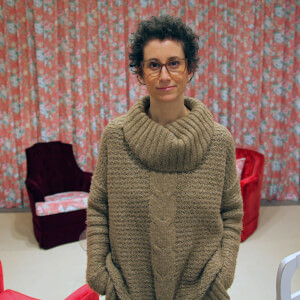The first “test-tube baby” was born 42 years ago. Since then, over seven million children have been conceived through in vitro fertilization (IVF). Popular culture leads us to believe that every attempt of this biotechnology succeeds. But according to the European Society of Human Reproduction and Embryology (ESHRE), the global success rate is only 27%.(1)
Fertility treatments are profoundly gendered, in terms of physical interventions and emotional labour.(2) Reproductive biotechnologies such as IVF are often seen as the only response to infertility (or any childless status) in a society where woman(3) equals mother.(4) Women who are not mothers are often viewed as other in dominant discourses on female normativity.(5) When the cultural norms and values of a society encourage reproduction and celebrate parenthood, childlessness becomes a stigmatized status; being infertile means being less woman.(6)
For this conference, I propose an artist talk wherein I present my artistic and theoretical research exploring the taboo experience of unsuccessful of IVF through a practice of installation. My current artworks speak of IVF when it does not create life, challenging notions of the failed body, failed womanhood, and the science that promises to circumvent these failures. Using dialogue and space as sites of interaction, these works invite the public to engage through active listening, exposing the human cost of reproductive biotechnologies and questioning their exalted status in contemporary society.
My exhibition LET’S GET YOU PREGNANT!, presented at the Galerie de l’UQAM from February 7 to March 21, 2020,(7) reveals the experience of failure of IVF within the social, political and medical systems that place motherhood at the forefront of women’s lives. An audio and museum installation creates a virtual conversation between 28 participants, including myself, who have undergone failed IVF cycles and not become mothers.
The exhibition space is a site of consciousness-raising. Answering questions about the body, infertility, identity, the medical system, hope, failure and voice, participants convey the conflicted experience of unsuccessful IVF. The six-hour soundtrack is constructed from excerpts of interviews between artist and participant. The voice of each participant is assigned a place in one of six speakers, installed in three boxes placed among a circle of six chairs arranged in a salon setting. The public is invited to sit amongst the women as they share stories of strength and resilience, using pathos and humour.
In contrast with this paradomestic space, the museum space displays artefacts from the IVF treatments of 16 of the 28 participants in personalized vitrines with hand-written place cards. These portraits, at once clinical and intimate, include vials, syringes, medical documents, baby booties, images of lost embryos, etc.
LET’S GET YOU PREGNANT! facilitates four conversations: between artist and participant, between participants, between domestic and museum spaces, and between artwork and public. The installation invites us to hear these women, and to rethink the intersections of science, socially- defined roles and procreation.
Notes:
(1) ESHRE. (2018). ART Fact Sheet. [Press release]. Retrieved from https://www.eshre.eu/Press-Room/Resources
(2) Throsby, K. (2002). ‘Vials, Ampoules and a Bucketful of Syringes’: The Experience of the Self-Administration of Hormonal Drugs in IVF. Feminist Review, (72), 62-77.
(3) The term “woman” is employed for strategic political purposes, and in no way assumes the fixity of a gender binary.
(4) Letherby, G. (1999). Other than mother and mothers as others: The experience of motherhood and non-motherhood in relation to ‘infertility’ and ‘involuntary childlessness’. Women’s Studies International Forum, 22(3), 359-372. http://dx.doi.org/10.1016/S0277-5395(99)00028-X Throsby, K. (2004). When IVF Fails. Feminism, Infertility and the Negotiation of Normality. London: Palgrave MacMillan.
(5) Letherby, G. (2002). Challenging Dominant Discouses: Identity and change and the experience of
‘infertility’ and ‘involuntary childlessness’. Journal of Gender Studies, 11(3), 277-288.
http://dx.doi.org/10.1111/1475-682X.00003
(6) Miall, C.E. (1986). The Stigma of Involuntary Childlessness. Social Problems, 33(4), 268-282.
Retrieved from http://www.jstor.org.proxy.bibilotheques.uqam.ca:2048/stable/800719
(7) The gallery closed on March 13 due to COVID-19.
Back






